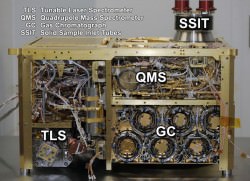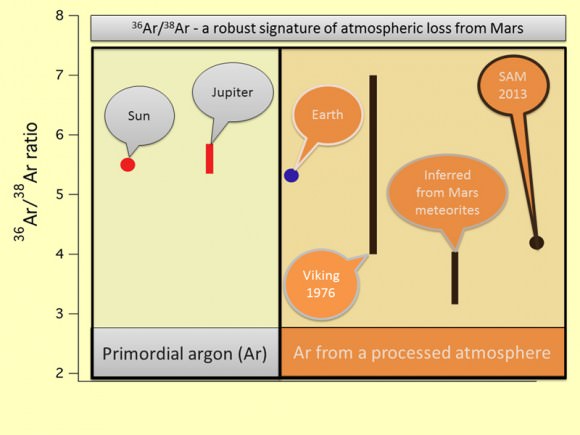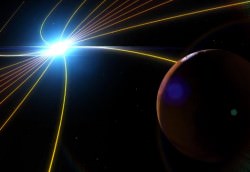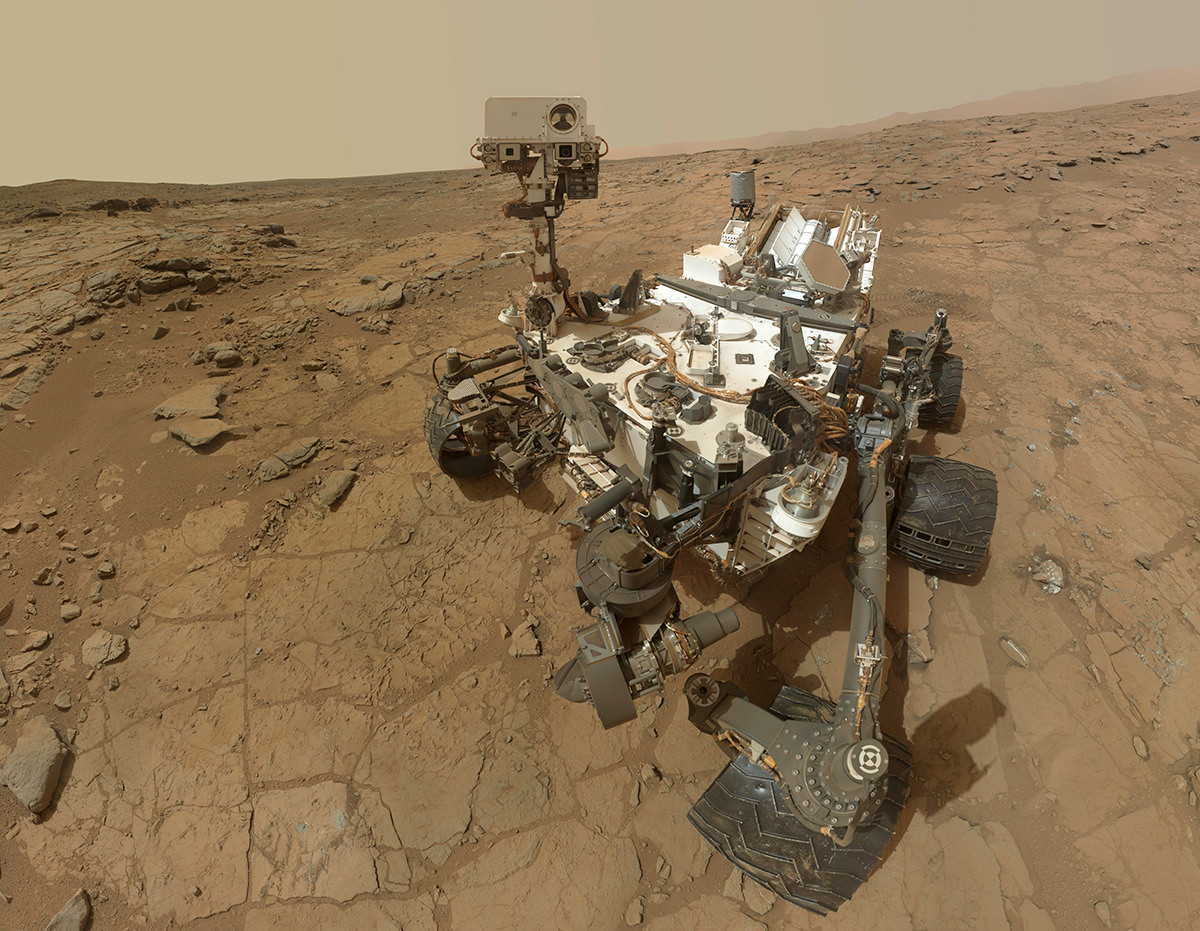Although today Mars’ atmosphere is sparse and thin — barely 1% the density of Earth’s at sea level — scientists don’t believe that was always the case. The Red Planet likely had a much denser atmosphere similar to ours, long, long ago. So… what happened to it?
NASA’s Curiosity rover has now found strong evidence that Mars lost much of its atmosphere to space — just as many scientists have suspected. The findings were announced today at the EGU 2013 General Assembly in Vienna.

Curiosity’s microwave oven-sized Sample Analysis at Mars (SAM) instrument analyzed an atmosphere sample last week using a process that concentrates selected gases. The results provided the most precise measurements ever made of isotopes of argon in the Martian atmosphere.
Isotopes are variants of the same element with different atomic weights.
“We found arguably the clearest and most robust signature of atmospheric loss on Mars,” said Sushil Atreya, a SAM co-investigator at the University of Michigan.
SAM found that the Martian atmosphere has about four times as much of a lighter stable isotope (argon-36) compared to a heavier one (argon-38). This ratio is much lower than the Solar System’s original ratio, as estimated from measurements of the Sun and Jupiter.

This also removes previous uncertainty about the ratio in the Martian atmosphere in measurements from NASA’s Viking project in 1976, as well as from small volumes of argon extracted from Martian meteorites retrieved here on Earth.
These findings point to a process that favored loss of the lighter isotope over the heavier one, likely through gas escaping from the top of the atmosphere. This appears to be in line with a previously-suggested process called sputtering, by which atoms are knocked out of the upper atmosphere by energetic particles in the solar wind.

Lacking a strong magnetic field, Mars’ atmosphere would have been extremely susceptible to atmospheric erosion by sputtering billions of years ago, when the solar wind was an estimated 300 times the density it is today.
These findings by Curiosity and SAM will undoubtedly support those made by NASA’s upcoming MAVEN mission, which will determine how much of the Martian atmosphere has been lost over time by measuring the current rate of escape to space. Scheduled to launch in November, MAVEN will be the first mission devoted to understanding Mars’ upper atmosphere.
Find out more about MAVEN and how Mars may have lost its atmosphere in the video below, and follow the most recent discoveries of the MSL mission here.
Source: NASA/JPL

